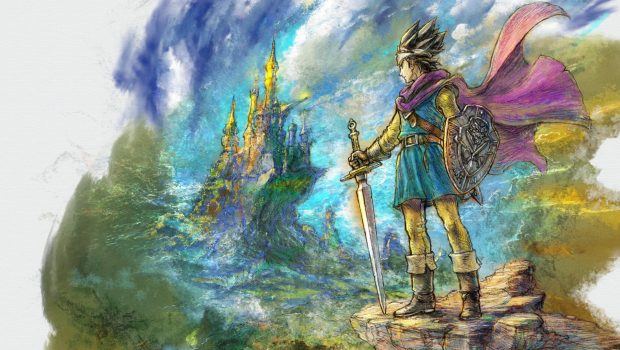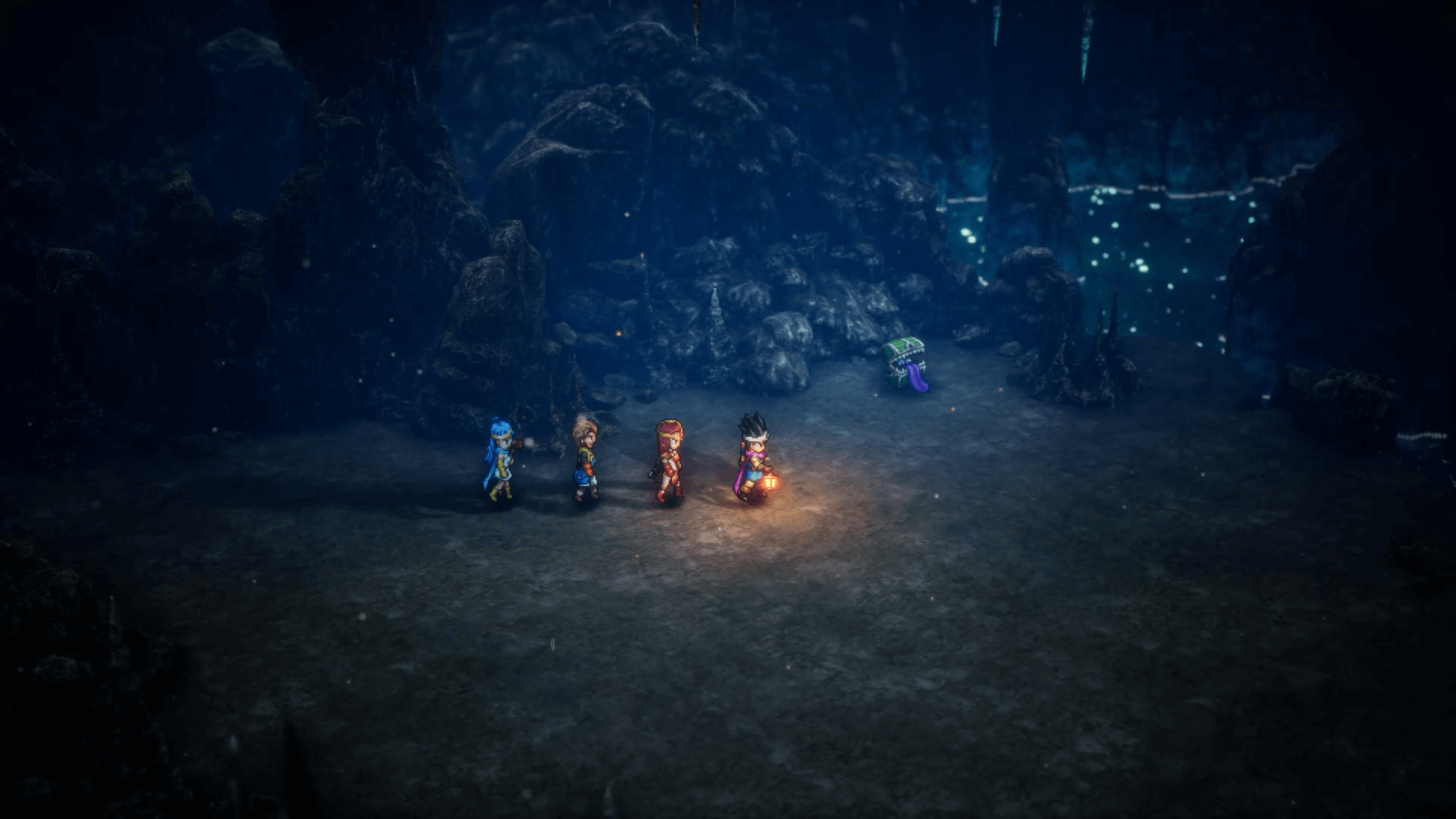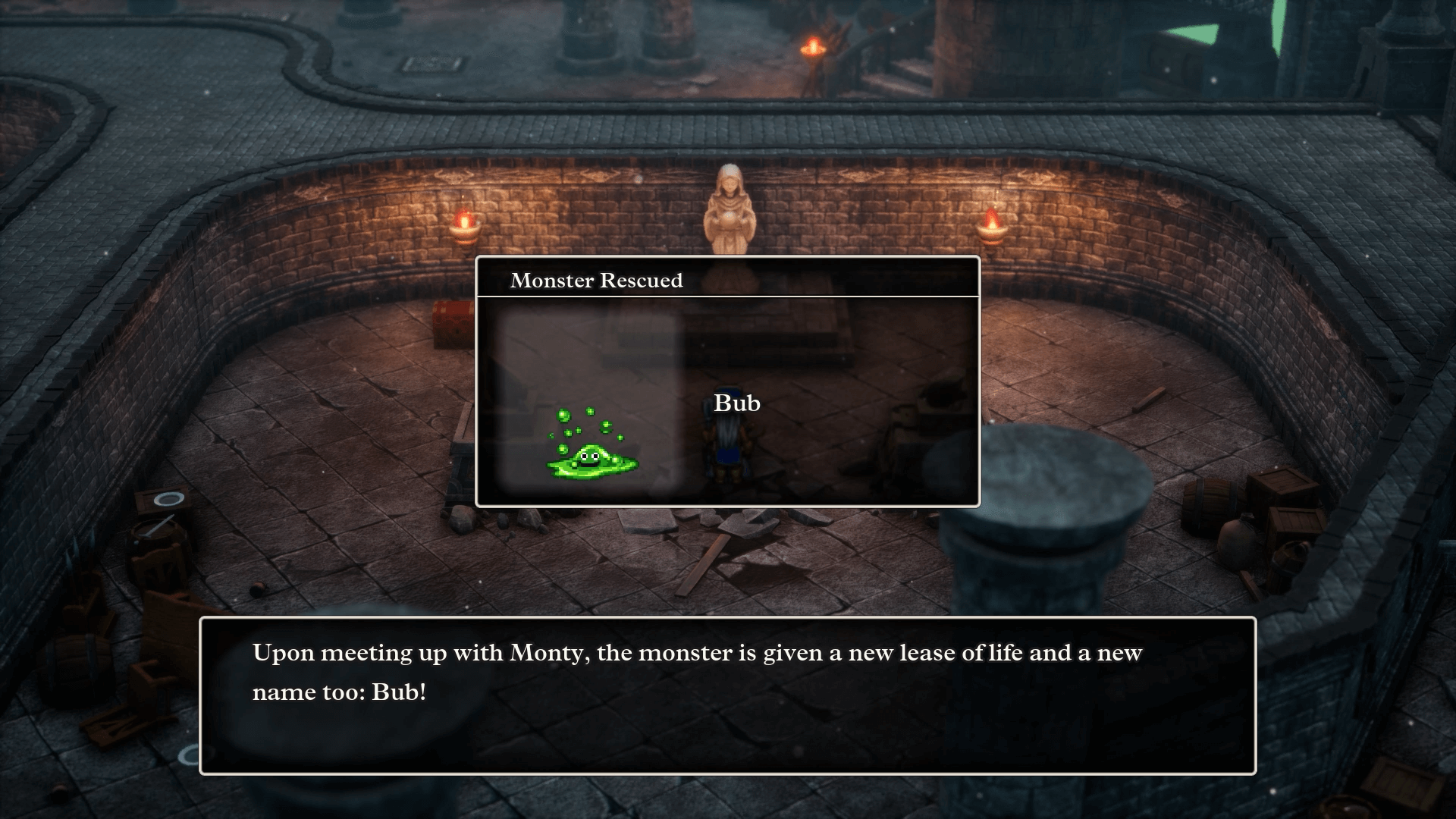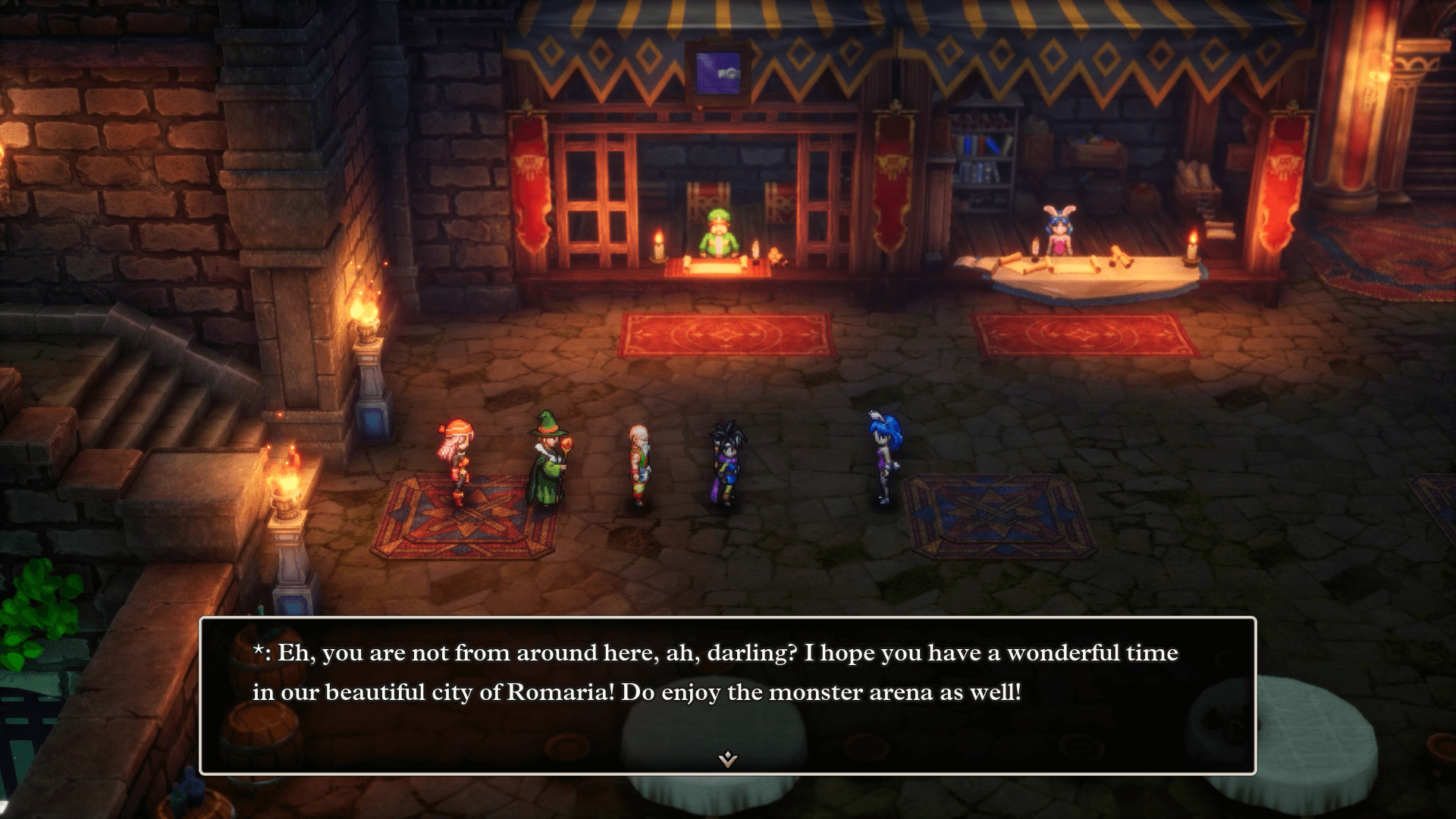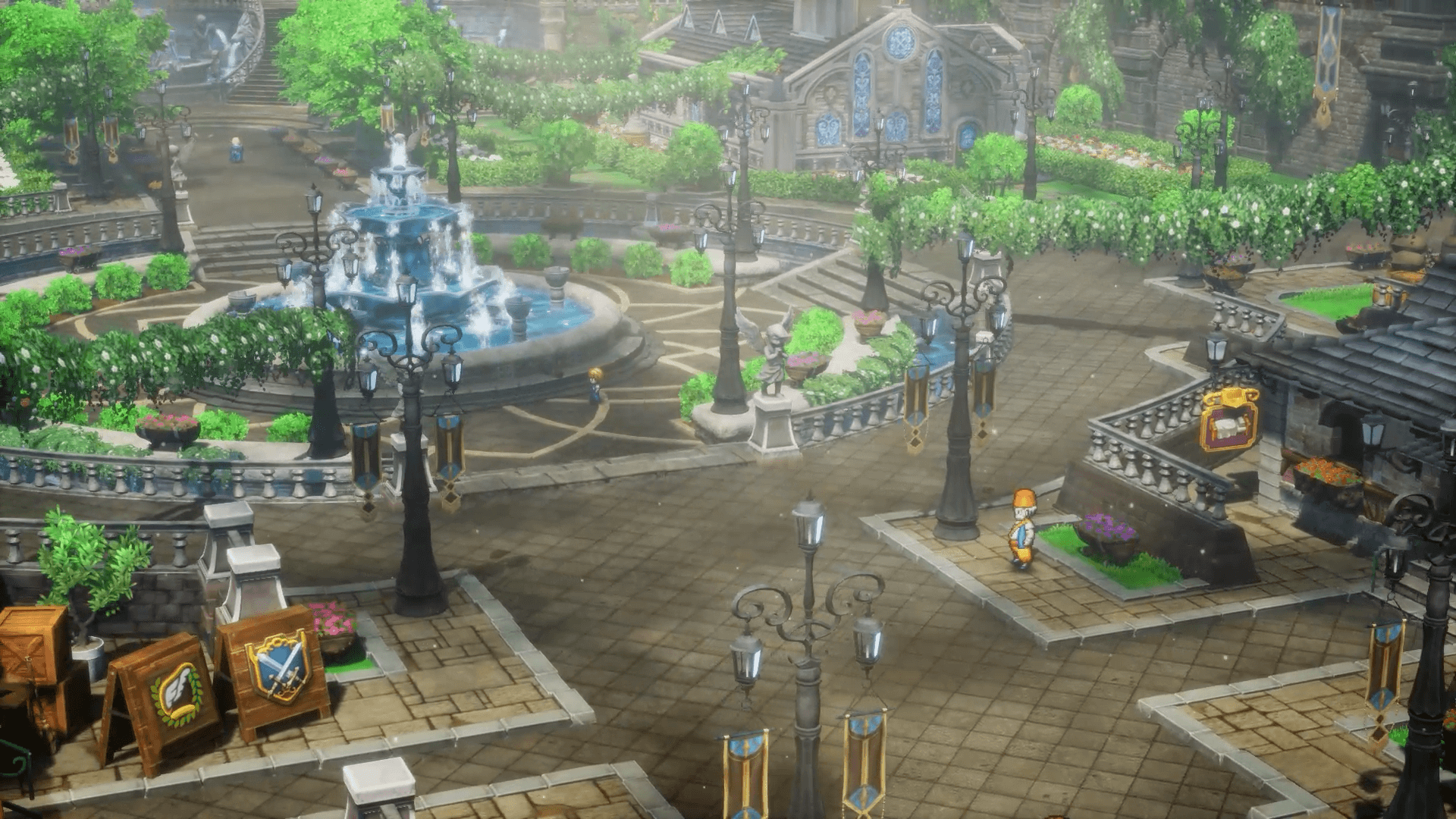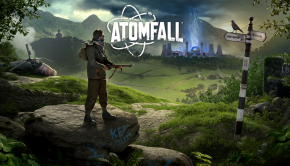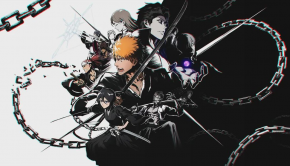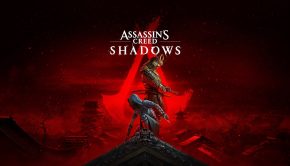Dragon Quest III HD-2D Remake Review
Summary: Old meets new in this gorgeous, JRPG that long time fans of the genre are bound to adore
4.1
Don't call it a comeback
Dragon Quest III HD-2D Remake is a curious beast.
A remake of a remake that is by far the best way to play this landmark NES/SNES JRPG, that pulls off the rare feat of feeling simultaneously modern and antiquated.
A prequel to the original Dragon Quest (which is also getting the HD-2D treatment) DQ III opens with a deity giving the player a personality test to see if you’re a straight arrow or a slippery eel.
This isn’t a permanent assessment either because if you read the right book or put on a cursed accessory, you can change your personality, however, after dozens of hours of pre-release play later I’m still not entirely sure what effect this system has on either exploration or combat, but its quite fun trying to figure it out.
Once your dubious psyche evaluation is over your character wakes up on their 16th birthday to be told by their mother they need to stop writing about video games and get a proper job. Sorry, that was my 38th birthday. Back in the wonderful world of Dragon Quest III our hero is sent on a quest by the King to defeat the Archfiend Baramos and avenge your father who everyone has assumed was killed while trying to do the same thing.
After a quick stop at the pub to corral the local drunks to your cause (thankfully a warrior, a mage, and a priest walked into that particular bar) you are off on your grand adventure with little more than a pot lid and a stick for protection, and a vague understanding of which way to go thanks to it now being marked on your map the game ditches you into the world map and tells to deal with it.
That’s when I was given a harsh reminder that, despite the beautiful new set dressing, sweeping score, and serviceable voice acting, I was still playing the remake, of a remake of a JRPG that first came out in 1988.
An incredibly clever JRPG for sure. One, I would be happy to call it foundational thanks to the amount of systems crammed into it that I thought were added for the new version and it turns out we’re in it all along. Like a day-night cycle that affects item placement, story beats, and what shops are open, one of the most comprehensive fast travel systems I think I’ve ever stumbled upon and a fairly complex job system.
On the surface, it’s something you’ve no doubt seen before. There are a half dozen classes, including the usual Warrior, Mages, and Priests. Then there are some slightly more specialised classes like the enemy debuffing Gadabout, and the new Monster Wrangler that learns attacks from tame monsters scattered across the map that you need to find and befriend to open up new abilities.
So far, so job system. The twist comes when you hit level 20 and take a trip to Alltrades Abby.
Here you can change the classes of your party members ( except the protagonist who forever shall be the Hero). They keep all the abilities and spells they’ve learned as t but drop to level 1 and their stats are halved ( which can then be built back stronger).
This little twist is genius, as it allows you to diversify and to a certain extent tailor the skill set of each member of your party while continuously improving their stats through a combination of power leveling and being open to changing up your tactics.
The ability to change your equipment mid-fight and some weapons allowing you to use them as items to fire off special attacks and abilities without needing to use MP is something I think more RPGs need to incorporate as it stops you from being caught short if you get jumped by elemental beasties.
Still, there are parts of the game that show their age. Something I am sure the devs were painfully aware of because although the original feeling of DQIII is lovingly preserved (for good and ill) great pains have been taken to polish up the parts of the experience that have become a little rusty over the years and make it a bit more palatable for modern audiences, at least in the gameplay steaks.
Most of this revolves around trying to make combat less of a grind. You can speed up encounters, as well as assign roles to members of your party during combat so you don’t need to worry about overseeing every action they make ( though you can do that if you like)
There are also three levels of difficulty, depending on how much you like having to walk back to town to resurrect almost all your party at a church by the profiteering priests after most of it gets wiped out by one unfortunate random encounter with a group of savage crabs.
On the plus side though, DQ III, auto saves a lot. The checkpointing is almost excessive in its design, but I welcome it.
If you are a glutton for punishment and want to play through the game as close to the original experience as possible, minus the graphics (sorry you’re going to have to put up with it looking lush) the training wheels can be discarded in the options.
Though after knocking it down to easy for a little while, it’s a shame that the difficulty wasn’t more granular, as easy is far too easy and makes combat all but pointless. While normal can be an utter slog at times, especially if you wander into the wrong area or spend ten minutes crossing the Atlantic only to find yourself woefully under-leveled despite its apparently non-linear structure once you get your hands on a boat and the game opens up in the second act.
It’s at this point when the whole world map is available, you realise that you’re journeying through a fantastical version of Earth. It’s also when the Zoom spell (aka fast travel) becomes your best friend as you’re often called to travel from one end of the world to the other, at one point from Britain to Australia and then back again, to progress in the game.
There’s a wealth of cultures to explore too. Although breathes in through teeth, Some are shall we say, less culturally sensitive than others. I get the script is 30 years old at this point, and a decision needed to be made, but you would think after maybe at some point between deciding to make this new version, translating it into English, and then asking someone to do an Indian accent that would make Hank Azaria feel uncomfortable, that maybe, just maybe, since we’re remaking the game and all you could have kicked the lazy stereotypes and sing-song accents into touch.
I don’t even find it offensive, just baffling.
Lazy stereotypes aside though, the world of Dragon Quest III looks gorgeous. Ever since I saw Octopath Traveller I thought it would be perfect for remaking older JRPGs and I’m so happy that Square Enix thought so too as you end up with some lovely backgrounds, surprisingly lush lighting, and Akira Toriyamas beautiful designs brought to life with richly animated 2d sprites. It’s old meets new in the best possible way.
It’s worth exploring too because treasure isn’t just limited to chests, but can also be prized from pots, crates and even found on the floor. While scouring the world map you’ll also come across
caches of useful items twinkling in midday sun, or found in hidden areas designated by something looking a little off on the map. Like a lone tree in the middle of a desert, a clearing in the woods, or an out-of-place standing stone.
It’s also a little less daunting than it was on the SNES and NES as the game now shows you where to go next on the map with a series of destination markers and lists your current objections. Instead of relying on the old system that had you ask your character to remember clues and directions from conversations they’d just had (although it is still included for purists). This minimizes confusion and improves the pace of the game no end.
The audio presentation is also superb thanks to a rearranged score now played by a full orchestra. It’s sweeping, stirring, and absolute ear candy. It’s a shame the same can’t be said for the new voice acting which is serviceable, but nothing to write home about.
Final Thoughts
Dragon Quest HD-2D Remake is by far the best way to play this seminal JRPG. It looks beautiful, and it is clear a lot of time and attention has been put into making the game more playable for modern audiences that may not be as patient with its brutal combat and more esoteric foibles.
Fans of the original will certainly have a blast but new players may find some of its systems taxing regardless and need to be aware that although it may look shiny and new this is still essentially bells and whistles aside, a suped-up port of an NES/SNES game and all that entails.


